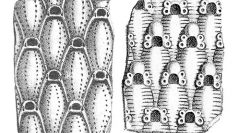

 Comptes Rendus Palevol
1 (7) - Pages 533-547
Comptes Rendus Palevol
1 (7) - Pages 533-547Alcide d’Orbigny was a prolific taxonomist and bryozoans were one of the phyla for which he described an enormous number of new species and supraspecific taxa. He was introduced to these colonial invertebrates by his father as early as 1819 when observing living colonies at La Rochelle, and collected further examples of Recent bryozoans during his explorations of South America (1826–1834). This South American collection, comprising 44 new and two existing species, was described between 1841 and 1847. However, d’Orbigny’s main work on bryozoans concerned fossil species and was published between 1850 and 1854 in the Prodrome and, more particularly, in the Volume 5 of the Terrains crétacés . The latter contains descriptions of approximately 900 species, and 170 new genera. Although most of these taxa are illustrated, the stylised nature of the figures has frequently hampered their recognition, despite the valuable revisionary work published by Pergens, Canu and Voigt. D’Orbigny developed a logical system of classification and nomenclature, parts of which survive in contemporary bryozoan taxonomy. A new study focusing on the type specimens of type species of bryozoan genera erected by d’Orbigny is in progress, primarily for the revised cheilostome and cyclostome volumes of the Treatise on Invertebrate Palaeontology . This research, using SEM imaging of uncoated specimens to reveal small-scale details of taxonomic significance, is permitting a re-evaluation of d’Orbigny’s genera some of which have been unjustifiably neglected.
Bryozoa, taxonomy, history of science